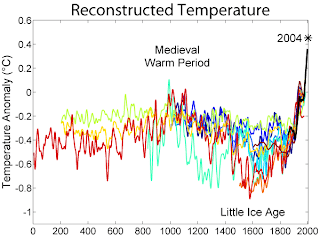Early Pre-Natal Development
 When you are developing in the womb, especially in the first trimester when key developmental events occur, the levels of sex hormones in the umbilical bloodstream from your mother may affect many traits you will show as an adult.
When you are developing in the womb, especially in the first trimester when key developmental events occur, the levels of sex hormones in the umbilical bloodstream from your mother may affect many traits you will show as an adult.It has been known for some time that prenatal exposure to sex hormones can affect a woman's risk of breast cancer later in life. (For example this study, Maternal factors and breast cancer risk among young women, indicated a mother's use of diethylstilbestrol (DES, a synthetic estrogen) was associated with a 2.3 times higher risk of breast cancer for her daughter.)
There is also some evidence that prenatal hormone exposure affects brain lateralization and/or hand preference. For example see the paper Handedness and other laterality indices in women prenatally exposed to DES.
Recent Research Results
The recent findings of the Dutch researchers are reported in the online version of the British Medical Journal: "Innate left handedness and risk of breast cancer: case-cohort study" (PDF file here).The researchers "found that left-handed women are more than twice as likely to develop premenopausal breast cancer as non-left handed women. This risk is compatible with left handedness being a marker of constitutional risk rather than of environmental risk as with postmenopausal breast cancer." They pointed out that both breast cancer risk and left handedness have been associated with prenatal exposure to sex hormones, but their research did not show the cause of the correlation, only that it exists.
Cuno Uiterwaal, an assistant professor of clinical epidemiology at the University Medical Center in Utrecht, and one of the authors of the recent publication, said, "What our study intends to do is focus on this area. We do not know all the causes of breast cancer, that is why we should continue. This may be one new factor that leads us to a better understanding of the etiology."
Finger-Length Ratios
There are other adult traits associated with intrauterine exposure to sex hormones. Finger-length ratio (the ratio of the length of the second to the fourth digits, the index finger to the "ring" finger) is sexually dimorphic (different, at least statistically, between boys and girls), and is thought to be associated with pre-natal exposure to androgen hormones. For example, in opposite-sex twins, the transfer of androgenic hormones from the boy baby to the girl baby may cause her to have finger-length ratio more typical of a male.
Research has tried to see if this possible evidence of steroid hormone exposure in the womb is linked with other adult traits, such as sexual preference, tendency to violence, and so on.
Hand Preference
The research relating to how prenatal exposure to hormones affects hand preference is still very sketchy. There is apparently a strong genetic component to hand preference, as discussed in this previous Science In Action post. (Dr. Klar has found additional support for his thesis that hand preference is genetic, and linked to hair-whorl direction.)Additional Resources
Paper entitled Association of fetal hormone levels with stem cell potential: evidence for early life roots of human cancerNice site on brain lateralization and handedness
The challenges for left-handers, and those who have to deal with them. E.g. those damn school desks!
And check out Great Left Handed People in this sister blog.
Technorati tags: science, breast cancer, science education, handedness, education, Science In Action





